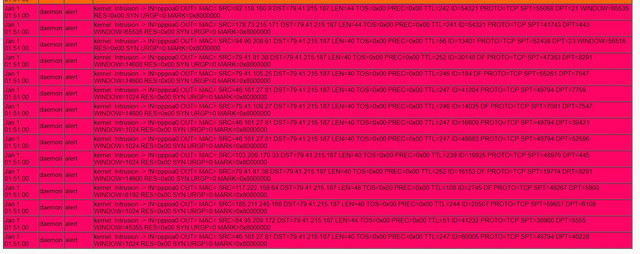Greetings everyone, I humbly ask for help about my internet speed.
My router (TP-Link TD-W8960N ) halves the download speed after max 1 day from its reset.
By "reset" I mean that once in a couple months my connection goes completely away (router lights flashing at all), so I sistematically call my Internet Provider to lay their magical hands on it and solve the problem. It takes them about 24 hours to reset it. Be cabled or wireless, from PC's or smartphones, my download speed is a nice and constant 4.5 Mbps in the following few hours (up to a day) after the fix, but the following day it always recedes to 1.8-2.2 Mbps.
So, I know my internet speed could be better, I just can't find why the router is doing that. Considering that I'm living with other people, 200kBps is not nearly enough for more than 1 person to use it at any given time.
What I've being told:
After a large-enough number of phone calls to my IP, I've been given the following answers.
60% of the answers -- It's because of the bad hardware (telephone cables) that bring the connection from the central to my home, as I live in the countryside (it really doesn't make sense with my observations)
35% of the answers -- It's because of my third-party router which doesn't interface at best with their hardware or software (they are trying to sell me their own router)
one-time answer -- My router is not properly configured
one-time answer -- The IP admitted that they "overbook" their contracts above the central's capacity, and that they cut down our speeds to guarantee internet to everyone
What I've tried:
Also, the upload is abysmal, 0.30Mbps (37 kiLoByTePeRsEcOnD!) , I had troubles with deadlines because of that.
Given ther increasing trend of the data needed to do anything on the internet, I find this situation not sustainable for any future. I ask you for help.
Thank you in advance.
My router (TP-Link TD-W8960N ) halves the download speed after max 1 day from its reset.
By "reset" I mean that once in a couple months my connection goes completely away (router lights flashing at all), so I sistematically call my Internet Provider to lay their magical hands on it and solve the problem. It takes them about 24 hours to reset it. Be cabled or wireless, from PC's or smartphones, my download speed is a nice and constant 4.5 Mbps in the following few hours (up to a day) after the fix, but the following day it always recedes to 1.8-2.2 Mbps.
So, I know my internet speed could be better, I just can't find why the router is doing that. Considering that I'm living with other people, 200kBps is not nearly enough for more than 1 person to use it at any given time.
What I've being told:
After a large-enough number of phone calls to my IP, I've been given the following answers.
60% of the answers -- It's because of the bad hardware (telephone cables) that bring the connection from the central to my home, as I live in the countryside (it really doesn't make sense with my observations)
35% of the answers -- It's because of my third-party router which doesn't interface at best with their hardware or software (they are trying to sell me their own router)
one-time answer -- My router is not properly configured
one-time answer -- The IP admitted that they "overbook" their contracts above the central's capacity, and that they cut down our speeds to guarantee internet to everyone
What I've tried:
- Reconfiguring the router countless times. It doesn't make any difference.
- Upgrading its drivers, they are the same for many years now.
- Changing the telephone wallplug from which the router is attached to. It made a difference once, bringing the holy 4.5 Mbps, but a day later it receded to 2.2 Mbps. Changing the wallplug back to the usual one didn't make any difference.
- Using different configurations of the position of the ADSL filter. At the moment, the only one I found working is with the filter between the cabled telephone and the wallplug. The other wallplug on which the router is connected also has a fax plugged on top (in a tower-like junction).
Also, the upload is abysmal, 0.30Mbps (37 kiLoByTePeRsEcOnD!) , I had troubles with deadlines because of that.
Given ther increasing trend of the data needed to do anything on the internet, I find this situation not sustainable for any future. I ask you for help.
Thank you in advance.



